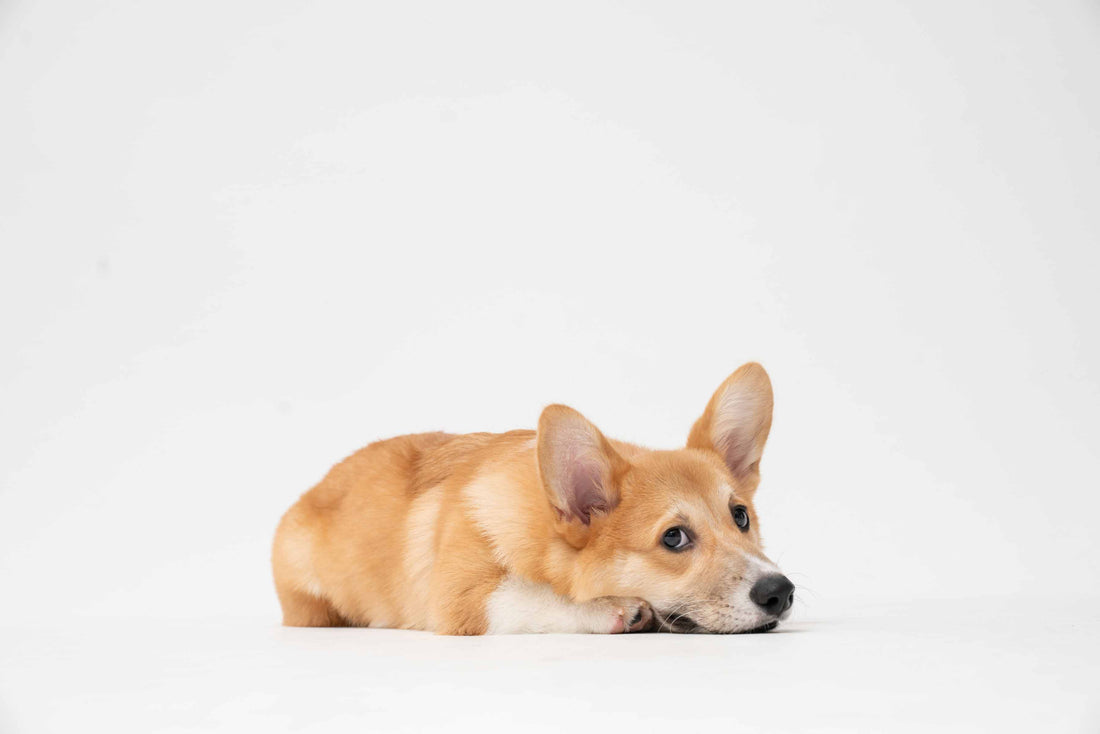
Can Dogs Have Autism?
Over the past decade, autism spectrum disorder (ASD) has become more widely diagnosed in humans. As a result, active research on the disorder continues to grow and raises questions in the veterinary world. The question of ASD in dogs is still a novel area of research, yet already certain behaviors have been found to resemble those of an autistic human. There are, however, certain conditions in dogs that may be confused with autism. Canine anxiety, brain tumors, or hyperthyroidism all can look similar to autism from the outside. It takes strong observation and research to determine what exactly is happening with your dog. Use the tools provided below to better determine your dog’s health, as well as discussing with your veterinarian.

Can Dogs be Autistic?
In humans, autism is a developmental disability. It can cause significant challenges and has symptoms that include things like difficulty relating to others, high levels of anxiety, "stimming" or repetitive behaviors, etc.
When we see behaviors like this in dogs, it might be easy to come to the conclusion that they are autistic. Others aren’t as easily convinced. Technically speaking, dogs cannot be autistic as the condition is unique to humans. Vets will generally avoid using the term except as a comparison. However, dogs can have a similar condition called canine dysfunctional behavior (CDB). The cause of the condition is unknown, but it appears to be related to a lack of mirror neurons. This inhibits the dog’s ability to learn social skills, particularly from other dogs. It is very rare in dogs, but is more common in certain breeds. Dogs with CDB are born with it and generally obvious during puppyhood, rather than showing up later in life.
Traits of a Dog With Autism
So, what are the traits or symptoms demonstrated by an autistic dog? You might suspect canine dysfunctional behavior if your dog:
-
Engages in repetitive behavior such as chasing its own tail for extended periods of time.
- While tail chasing is normal behavior, dogs with canine dysfunctional behavior can't seem to stop chasing their tail or otherwise spinning in place. It's likely that like autistic humans, these dogs are "stimming" to calm themselves down. Dogs with an anxiety disorder may also engage in this behavior.
-
Shows obsessive chewing behavior:
- some more complex compulsions have even shown behaviors such as lining up their toys.
-
Lack of response to interaction from both humans and other dogs.
- Autistic dogs may ignore you during walks, playtime, or feeding time. They may refuse to interact with other dogs and avoid eye contact.
-
Lack of normal expression of feeling or mood.
- Such as not wagging their tail when happy, or putting their ears back when upset.
-
Gets stuck in trance state.
- Research also describes “trance” states, where the dog stares off into space for an extended period of time. This can also be a sign of neurological disease.
-
Inappropriate reaction to stimuli.
- Such as a yelping reaction when touched gently. This can also lead to aggressive behavior. They may also be hypersensitive to noise.
-
Preferring to avoid new situations or reacting to excessive stimulation.
- These dogs may retreat to a closet, under the bed, or their crate if things get too much for them.
-
Decreased physical activity, which may be more obvious in some breeds than others.
-
These behavioral indications are not very different from those in humans. Avoiding eye contact, overreacting to stimuli and wanting to hide in a corner when things get too much are all traits seen in autistic children and adults.
If your dog is showing these traits, talk to your vet. Particularly if your dog is becoming increasingly lethargic, as this can indicate hypothyroidism or another serious condition.
-

Risk Factors for Autism in Dogs
As with any disease, there are specific factors that put a dog more at risk for CDB. Firstly, most autistic dogs are male. Certain breeds are also more at risk, with bull terriers being the most vulnerable. A veterinary behaviorist at Tufts University, Nicholas Dodman found that as many as 85% of any bull terrier litter have compulsive tail-chasing behavior. Many of these dogs also showed gastrointestinal issues and skin conditions, which have been associated with autism in humans. Autism-like behavior has also been found in miniature poodles.
It's likely that ongoing studies may identify other breeds at high risk of these kinds of behaviors. The studies identified biomarkers that are elevated in both children with autism spectrum disorder and dogs with canine behavioral dysfunction.

How You Can Help Your Autistic Dog
Like human autism, there is no cure for canine dysfunctional behavior. It also varies greatly in its impact on the animal. Symptoms vary in type and intensity. Some animals may only demonstrate some mild repetitive behavior and may also be hyperactive or destructive when under stress, while others might have profound social issues that make them very difficult to train.
Patience
You need to be patient with your dog and understand that they are going to take longer to learn commands and you may need to modify how you get their attention.
Medication
If your dog's compulsive behaviors are a problem, especially if they become aggressive, you should talk to your vet about medication. Your dog may even benefit from calming supplements for certain situations, such as going to the vet or when people are letting off fireworks. Finding a vet who does house calls can help, and the same with grooming and toe clipping.
Place and Perspective
An autistic dog needs a comfortable, low-stress space. An appropriately-sized crate is a good place to start, but cover the crate with a blanket to make it a darker and more comfortable hiding place. Their crate should be away from loud noises and odd smells. Consider getting them a weighted blanket, but make sure it is one designed for dogs as human weighted blankets can be too heavy, especially for small dogs. As some autistic dogs are hyper-sensitive to touch, you need to be careful about how you pet them. Do not allow strangers to pet them. As with humans, some autistic dogs benefit from gentle pressure. A pressure wrap can be very reassuring to them when they are stressed.
Plan Ahead
Avoid dog parks or busy city streets if your dog finds them uncomfortable. This is the equivalent of being in a crowd. Make sure that your dog gets regular exercise that is consistent. They may benefit from their walks being at the same time and to the same place. Always use positive reinforcement training methods as punishing an autistic dog can cause them to withdraw or become destructive.

Working with a behaviorist can help you and your dog learn to navigate CDB. These dogs can still make great companions as long as you know how to work with them.
Join Our Pack
Follow us @NaturVet on social media to fill us in on any tips we might have missed. And, check out the rest of NaturVet.com. We’ll keep you up to date on all our latest pet resources, supplements, tips and tricks, and more – everything you need to be the best pet parent possible!







